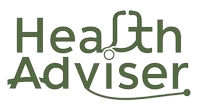Health insurance is a critical aspect of modern healthcare systems, providing financial protection against high medical costs and ensuring access to necessary medical services. This article will explore the intricacies of health insurance, its types, functioning, and the numerous facets that influence its role in healthcare.

Types and Categories of Health Insurance
Public Health Insurance
- Medicare: A federal program for people aged 65 and older, and some younger individuals with disabilities.
- Medicaid: A state and federal program providing coverage for low-income individuals and families.
- CHIP (Children’s Health Insurance Program): A program offering low-cost health coverage to children in families that earn too much money to qualify for Medicaid.
Private Health Insurance
- Employer-Sponsored Insurance: Coverage provided by employers to their employees.
- Individual Health Insurance: Plans purchased directly by individuals from insurance companies.
- Family Health Insurance: Coverage that extends to the entire family under one plan.
Managed Care Plans
- Health Maintenance Organizations (HMOs): Require members to use a network of doctors and hospitals.
- Preferred Provider Organizations (PPOs): Offer more flexibility in choosing healthcare providers.
- Exclusive Provider Organizations (EPOs): Combine features of HMOs and PPOs but restrict out-of-network care.
- Point of Service (POS) Plans: Blend characteristics of HMOs and PPOs, requiring referrals for specialist care.
High-Deductible Health Plans (HDHPs)
- Health Savings Accounts (HSAs): Tax-advantaged accounts paired with HDHPs to cover medical expenses.
Symptoms and Signs
Coverage Benefits
- Preventive Services: Immunizations, screenings, and wellness visits.
- Emergency Services: Coverage for urgent and emergency care situations.
- Hospitalization: Inpatient care, surgeries, and extended hospital stays.
- Maternity and Newborn Care: Services related to pregnancy and childbirth.
- Prescription Drugs: Coverage for medications prescribed by a doctor.
Coverage Limitations
- Exclusions: Specific conditions or treatments not covered by the plan.
- Network Restrictions: Limitations on the healthcare providers and facilities that can be used.
Causes and Risk Factors
Economic Factors
- Income Levels: Affect eligibility for public insurance programs and affordability of private insurance.
- Employment Status: Determines access to employer-sponsored insurance.
Social Determinants of Health
- Education and Awareness: Influence understanding of available health insurance options.
- Cultural Beliefs: Affect perceptions and utilization of health insurance.
Policy and Regulatory Factors
- Government Policies: Impact the structure and availability of health insurance programs.
- Regulatory Changes: Influence coverage requirements and insurance market dynamics.

Diagnosis and Tests
Enrollment Processes
- Open Enrollment Periods: Annual windows for signing up for health insurance.
- Special Enrollment Periods: Times outside the regular period due to qualifying life events (e.g., marriage, birth).
Verification Procedures
- Eligibility Verification: Confirming qualification for specific plans.
- Income Verification: Ensuring accuracy for subsidy calculations.
Treatment Options
Medical Treatments
- Doctor Visits: Covered consultations with primary care physicians and specialists.
- Surgical Procedures: Coverage for necessary operations and postoperative care.
- Mental Health Services: Inclusion of mental health and substance abuse treatment.
Therapies
- Physical Therapy: Rehabilitation services following injuries or surgeries.
- Occupational Therapy: Assistance in regaining daily living skills.
- Speech Therapy: Services for speech and communication disorders.
Lifestyle Adjustments
- Wellness Programs: Incentives for healthy lifestyle choices.
- Chronic Disease Management: Support for managing conditions like diabetes or hypertension.
Preventive Measures
Regular Screenings
- Cancer Screenings: Mammograms, colonoscopies, and other cancer checks.
- Blood Pressure Checks: Regular monitoring to prevent heart disease and stroke.
Vaccinations
- Childhood Immunizations: Routine vaccines for children.
- Adult Vaccinations: Flu shots, shingles vaccines, and more.
Health Education
- Nutritional Counseling: Guidance on maintaining a balanced diet.
- Fitness Programs: Access to gyms and fitness classes to encourage physical activity.
Personal Stories or Case Studies
Case Study 1: Managing Chronic Illness with Health Insurance
- Patient Background: Jane, a middle-aged woman with diabetes.
- Insurance Coverage: How her insurance plan covered essential treatments and medications.
- Outcome: Improved health and financial stability.
Case Study 2: Navigating Emergency Care
- Patient Background: John, a young man who suffered a car accident.
- Insurance Coverage: Emergency services, surgery, and rehabilitation.
- Outcome: Full recovery and minimized financial burden.
Expert Insights
Dr. Smith on the Importance of Health Insurance
- Quote: “Health insurance is essential for ensuring access to timely medical care and protecting individuals from catastrophic medical expenses.”
Dr. Brown on Preventive Care
- Quote: “Preventive services covered by health insurance can significantly reduce the risk of serious health issues and improve overall population health.”
Conclusion
Understanding how health insurance works is crucial for making informed decisions about healthcare coverage. This comprehensive guide highlights the types, benefits, limitations, and preventive measures associated with health insurance, providing valuable insights to navigate the complex landscape of health coverage.

